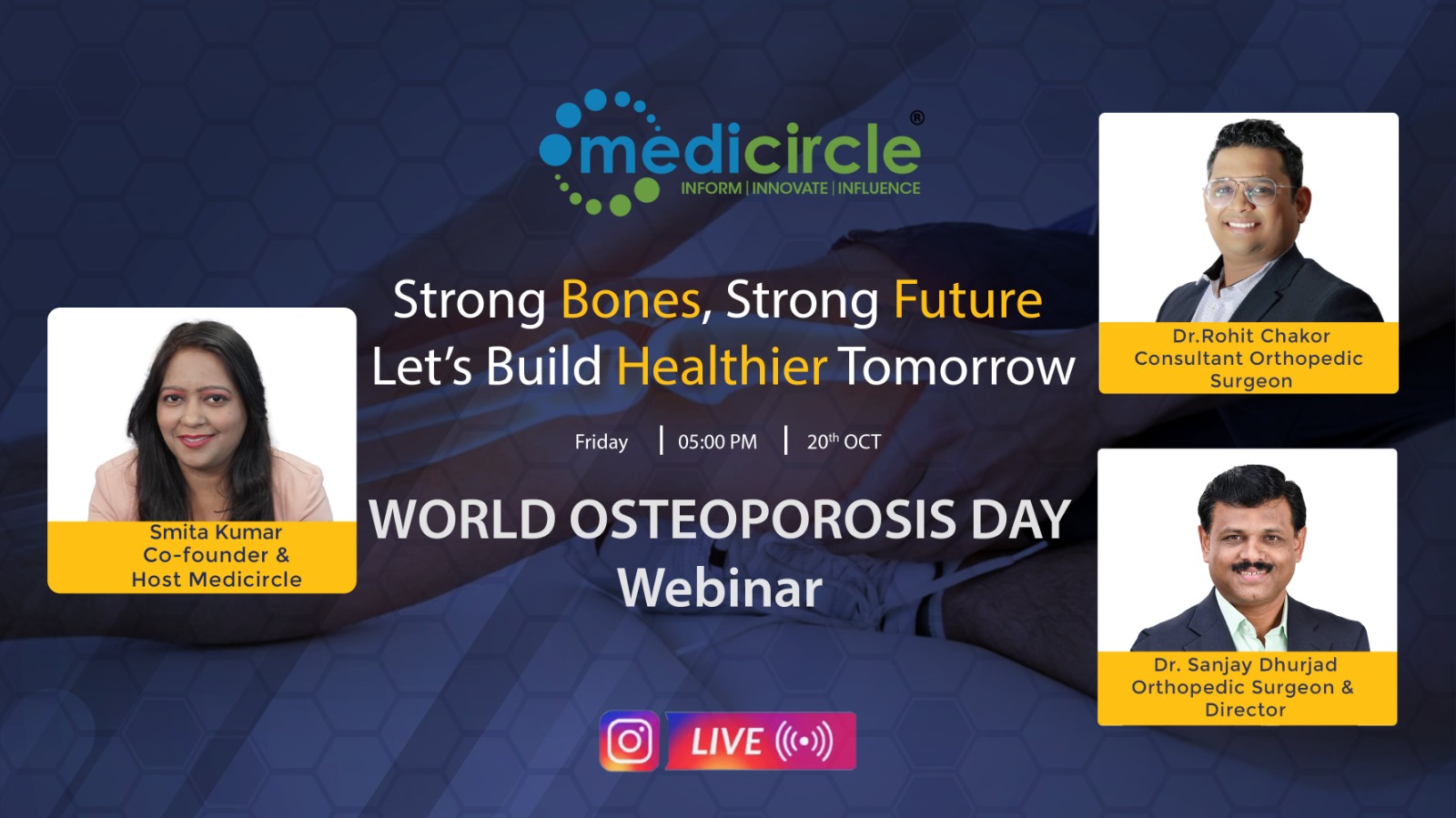Shedding light on a condition often misunderstood due to its silent nature, Medicircle hosted an insightful webinar on World Osteoporosis Day, which aimed to raise awareness about osteoporosis and its preventive measures where viewers were treated to a wealth of information about bone health. The virtual event was graced by healthcare expert Dr Sanjay Dhurjad, Orthopedic Surgeon and Director at Sudarshan Hospital Nashik and Dr Rohit Chakor, Orthopedic Surgeon with rich experience in renowned hospitals like Apollo Hospital and Columbia Asia Hospital.
Understanding Osteoporosis
Osteoporosis, unlike other diseases, doesn't manifest pain or specific symptoms, making it challenging to identify. Rather than a disease, it is a condition characterized by an imbalance in the bone formation and resorption process. This slow and silent process often goes unnoticed until a fracture occurs, bringing the condition to light, Dr. Sanjay Dhurjad emphasized the importance of recognizing early signs and taking preventive measures, especially for individuals aged 40 to 50. It is crucial for everyone, particularly those above the age of 50, to be aware of the heightened chances of developing osteoporosis. Detecting the condition can be challenging until about 40% of the calcium in the bones is depleted, a stage visible in X-rays. Thus, understanding the signs and symptoms becomes vital.
When there's suspicion of low calcium or possible osteoporosis, a Bone Mineral Density (BMD) test becomes instrumental. Dual-energy X-ray absorptiometry (DEXA) is a sophisticated form of BMD testing that offers accurate results on a scale. Values between 0 and 1 indicate normal bone density, -1 to -2.5 signify mild to moderate conditions, and below -2.5 suggests osteoporosis. Osteopenia, between -1.5 and -2.5, represents an early or mild stage of osteoporosis.
Prevention is Key
According to Dr Rohit Chakor, the term Osteoporosis is a combination of "Osteo," meaning bones, and "porous," signifying hollowness, this simple definition highlights the silent and often unnoticed nature of osteoporosis. The bones, over time, become fragile and porous, making individuals vulnerable to fractures without manifesting specific symptoms.
One of the key takeaways from Dr. Chakor's explanation is the emphasis on prevention as the best strategy. This becomes especially relevant in the context of the current scenario where lifestyle changes, particularly a decline in outdoor activities post-COVID, have become prevalent. The reduction in exposure to sunlight, a natural source of Vitamin D, has raised concerns about deficiencies that can worsen the risk of osteoporosis.
Understanding that prevention is the key to managing osteoporosis is important. Lifestyle adjustments, including regular exercise, a balanced diet, and adequate exposure to sunlight, are some proactive measures to protect bone health.
Impact of Menopause: Hormonal changes after menopause affect calcium absorption, leading to rapid calcium loss. Understanding the concept of Peak Bone Mass, formed before menopause, becomes crucial in maintaining lifelong bone health.
Prevalence in India:
According to recent studies, approximately 61 million people in India suffer from osteoporosis, and what's even more alarming is that a whopping 80% of them are women. These statistics shed light on the disproportionate impact of osteoporosis on the female population in the country.
Understanding the prevalence of osteoporosis, especially among women, emphasizes the need for targeted efforts in education, early detection, and proactive management, it's crucial to recognize the unique challenges faced by women about osteoporosis. Factors such as hormonal changes post-menopause, affecting calcium absorption and leading to rapid calcium loss, contribute significantly to the higher prevalence among women.
Management and Treatment: Managing osteoporosis involves a holistic approach, including regular exercise, a balanced diet, and supplements like calcium, Vitamin D, and protein. The webinar emphasized the importance of recognizing signs of declining bone health, undergoing regular check-ups, and ensuring proper treatment.
Osteoporosis may be a silent condition, but our webinar aimed to amplify the conversation around it. With the guidance of our expert panellists, we navigated through the complexities of bone health, emphasizing the importance of awareness, prevention, and early intervention. As we unlock the secrets of bone health, we empower individuals to take charge of their well-being and embrace a life of stronger and healthier bones

 With the guidance of our expert panellists, we navigated through the complexities of bone health, emphasizing the importance of awareness, prevention, and early intervention.
With the guidance of our expert panellists, we navigated through the complexities of bone health, emphasizing the importance of awareness, prevention, and early intervention.










.jpeg)











.jpg)








